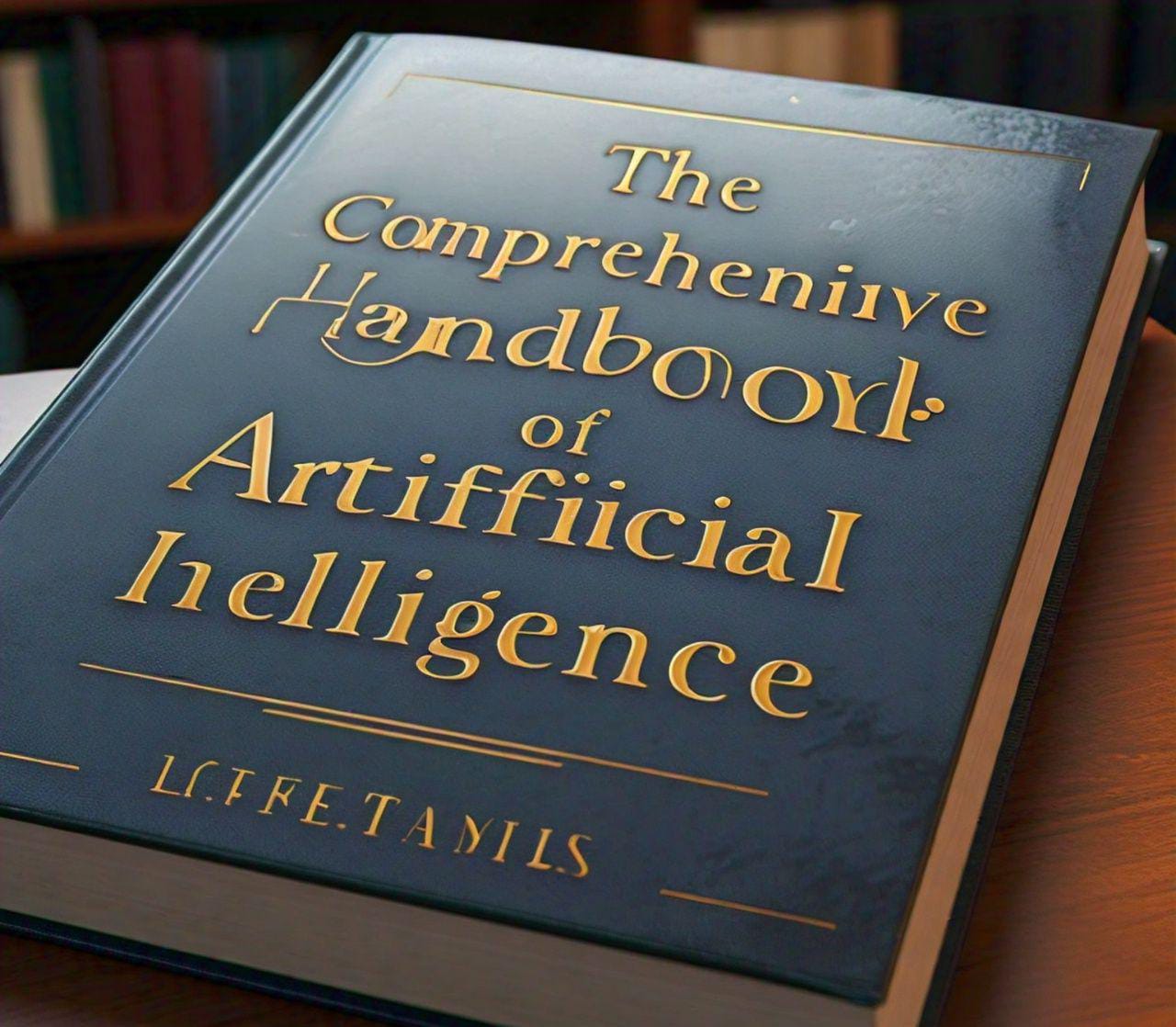The Comprehensive Handbook of Artificial Intelligence (AI)
Outline
- Introduction
- Definition of Artificial Intelligence (AI)
- Importance of AI in Today’s World
- History of AI
- Early Beginnings and Conceptualization
- Major Milestones in AI Development
- Evolution of AI Over the Decades
- Types of AI
- Narrow AI
- General AI
- Superintelligent AI
- Core Components of AI
- Machine Learning
- Neural Networks
- Natural Language Processing
- Robotics
- Machine Learning (ML)
- Definition and Importance
- Types of Machine Learning
- Supervised Learning
- Unsupervised Learning
- Reinforcement Learning
- Neural Networks and Deep Learning
- Basics of Neural Networks
- How Deep Learning Enhances AI Capabilities
- Natural Language Processing (NLP)
- Overview of NLP
- Applications of NLP in Real Life
- AI in Robotics
- Role of AI in Robotics
- Examples of AI-Driven Robots
- AI Applications Across Various Industries
- Healthcare
- Finance
- Transportation
- Education
- Entertainment
- Ethical Considerations in AI
- Bias and Fairness
- Privacy Concerns
- Job Displacement and Economic Impact
- Future of AI
- Predicted Advances in AI Technology
- Potential Benefits and Risks
- Challenges in AI Development
- Technical Challenges
- Regulatory and Legal Challenges
- Social and Ethical Challenges
- How to Get Started with AI
- Learning Resources and Tools
- Building Basic AI Models
- Advancing Your AI Skills
- AI in Daily Life
- AI-Powered Gadgets and Apps
- AI in Personal Assistants
- Conclusion
- Recap of AI’s Impact
- Final Thoughts on the Future of AI
- FAQs
- What is AI?
- How is AI Used in Everyday Life?
- What Are the Types of AI?
- What Are the Ethical Issues in AI?
- How Can I Start Learning About AI?
The Comprehensive Handbook of Artificial Intelligence (AI)
Introduction
The term artificial intelligence, or AI, describes the emulation of human intellect in computers that have been designed to have human-like thought and learning processes. From self-driving cars to voice assistants like Siri and Alexa, AI is transforming our world in profound ways. But what exactly is AI, and why is it so crucial in today’s rapidly evolving technological landscape?
History of AI
Early Beginnings and Conceptualization
The concept of artificial intelligence has roots that stretch back to ancient history, with myths and stories about intelligent automatons. However formal AI research didn’t start until the middle of the 20th century. In 1950, British mathematician and logician Alan Turing published a groundbreaking paper titled “Computing Machinery and Intelligence,” posing the question, “Can machines think?”
Major Milestones in AI Development
The 1956 Dartmouth Conference is considered the birthplace of AI as a field. Researchers like John McCarthy, Marvin Minsky, and Herbert Simon were key figures in early AI development. Throughout the 1960s and 1970s, AI saw a series of advancements and setbacks, known as “AI winters,” due to overhyped expectations and limited computational power.
Evolution of AI Over the Decades
The 1980s brought renewed interest with the advent of expert systems, and the 1990s saw significant progress in machine learning. The 21st century has witnessed an AI renaissance driven by massive data availability, advanced algorithms, and powerful computing infrastructure.
Types of AI
Narrow AI
Also known as Weak AI, Narrow AI is designed to perform a specific task, such as facial recognition or internet searches. It operates under a limited context and doesn’t possess generalized intelligence.
General AI
General AI, or Strong AI, refers to systems that exhibit human-like cognitive abilities across various tasks. This level of AI remains theoretical and is a major goal for researchers.
Superintelligent AI
Superintelligent AI surpasses human intelligence across all aspects, including creativity, problem-solving, and emotional intelligence. This concept, while still speculative, raises significant ethical and existential questions.
Core Components of AI
Machine Learning
Without explicit programming, machine learning (ML), a type of artificial intelligence (AI), allows computers to learn from data and get better over time. It’s the driving force behind many AI applications.
Neural Networks
Neural Networks are computing systems inspired by the human brain’s structure, designed to recognize patterns and interpret sensory data. They are foundational to deep learning.
Natural Language Processing
Through the interplay of computers and human language, natural language processing, or NLP, enables machines to comprehend, interpret, and produce human language.
Robotics
Robotics integrates AI to create autonomous machines capable of performing complex tasks in various environments, from manufacturing to space exploration.
Machine Learning (ML)
Definition and Importance
Machine Learning is essential for developing intelligent systems that can analyze vast amounts of data, recognize patterns, and make decisions with minimal human intervention.
Types of Machine Learning
Supervised Learning
Training models using labeled data with known desired output is known as supervised learning. Examples include classification and regression tasks.
Unsupervised Learning
Unsupervised Learning uses unlabeled data to identify hidden patterns or intrinsic structures. Clustering and association are common techniques.
Reinforcement Learning
Reinforcement Learning focuses on training models to make a sequence of decisions by rewarding desired behaviors and punishing undesired ones.
Neural Networks and Deep Learning
Basics of Neural Networks
Neural Networks consist of layers of interconnected nodes, or neurons, which process data through weighted connections. They mimic the way human brains process information.
How Deep Learning Enhances AI Capabilities
Deep Learning, a subset of machine learning, utilizes multi-layered neural networks to handle vast and complex datasets, significantly advancing image and speech recognition.
Natural Language Processing (NLP)
Overview of NLP
NLP enables machines to read, understand, and respond to human language in a way that is both meaningful and useful. It’s the technology behind chatbots and language translation services.
Applications of NLP in Real Life
NLP powers applications like virtual assistants, automated customer support, sentiment analysis, and content recommendations, making interactions with technology more intuitive.
AI in Robotics
Role of AI in Robotics
AI enhances robotics by providing autonomy and improving efficiency in performing tasks. Robots equipped with AI can learn from their environment and adapt to new situations.
Examples of AI-Driven Robots
From industrial robots that assemble cars to humanoid robots assisting in healthcare, AI-driven robots are becoming increasingly prevalent in various sectors.
AI Applications Across Various Industries
Healthcare
AI is revolutionizing healthcare through predictive analytics, personalized medicine, and advanced diagnostics, improving patient outcomes and operational efficiency.
Finance
In finance, AI algorithms are used for fraud detection, algorithmic trading, risk management, and customer service automation, providing a competitive edge.
Transportation
AI powers autonomous vehicles, traffic management systems, and predictive maintenance, enhancing safety and efficiency in transportation networks.
Education
AI facilitates personalized learning, automates administrative tasks, and supports students with special needs, transforming the educational landscape.
Entertainment
From content recommendations on streaming platforms to AI-generated music and art, AI is reshaping entertainment by enhancing user experiences and creativity.
Ethical Considerations in AI
Bias and Fairness
AI systems can perpetuate and amplify biases present in training data, leading to unfair and discriminatory outcomes. Ensuring fairness is a critical challenge.
Privacy Concerns
AI’s ability to process vast amounts of personal data raises significant privacy issues, necessitating robust data protection measures and regulations.
Job Displacement and Economic Impact
While AI can increase productivity, it also poses the risk of job displacement in certain sectors, requiring strategies for workforce reskilling and economic adaptation.
Future of AI
Predicted Advances in AI Technology
AI is expected to make strides in areas like quantum computing, enhanced natural language understanding, and more human-like robots, further integrating into daily life.
Potential Benefits and Risks
While AI promises numerous benefits, including solving complex problems and improving quality of life, it also presents risks such as ethical dilemmas and security threats.
Challenges in AI Development
Technical Challenges
Developing AI systems that are robust, reliable, and generalizable remains a significant technical hurdle, requiring continuous research and innovation.
Regulatory and Legal Challenges
Creating and enforcing regulations that balance innovation with safety and ethical standards is a complex challenge for policymakers.
Social and Ethical Challenges
Addressing societal concerns, such as AI’s impact on employment and ensuring equitable access to AI technologies, is crucial for sustainable development.
How to Get Started with AI
Learning Resources and Tools
Numerous online courses, tutorials, and books are available to help beginners learn AI, including platforms like Coursera, edX, and Khan Academy.
Building Basic AI Models
Starting with simple projects, such as image recognition or chatbots, allows newcomers to apply theoretical knowledge and gain practical experience.
Advancing Your AI Skills
As you progress, tackling more complex projects and staying updated with the latest research and tools will deepen your expertise and open up advanced opportunities.
AI in Daily Life
AI-Powered Gadgets and Apps
From smart home devices to fitness trackers, AI-powered gadgets and apps are becoming integral to everyday life, enhancing convenience and functionality.
AI in Personal Assistants
Virtual assistants like Siri, Alexa, and Google Assistant leverage AI to provide personalized assistance, making daily tasks more manageable and efficient.
Conclusion
Artificial Intelligence is not just a technological advancement; it’s a paradigm shift that’s reshaping every aspect of our lives. From revolutionizing industries to enhancing daily conveniences, AI’s impact is profound and far-reaching. As we stand on the brink of even more remarkable breakthroughs, the future of AI holds immense promise and potential. Embracing this technology while addressing its ethical and societal implications will be key to harnessing its full benefits.
FAQs
What is AI?
The creation of computer systems that are capable of carrying out operations that ordinarily require human intellect, such as voice recognition, visual perception, and decision-making, is known as artificial intelligence, or AI.
How is AI Used in Everyday Life?
AI is used in various applications like virtual assistants (Siri, Alexa), recommendation systems (Netflix, Amazon), autonomous vehicles, and smart home devices, enhancing convenience and efficiency.
What Are the Types of AI?
AI can be categorized into Narrow AI (designed for specific tasks), General AI (exhibiting human-like intelligence across tasks), and Superintelligent AI (surpassing human intelligence in all areas).
What Are the Ethical Issues in AI?
Key ethical issues in AI include bias and fairness, privacy concerns, and the potential for job displacement. Ensuring ethical AI development is crucial for mitigating these challenges.
How Can I Start Learning About AI?
You can start learning about AI through online courses, tutorials, and books. Engaging in practical projects and staying updated with the latest advancements will also help you build your skills.








